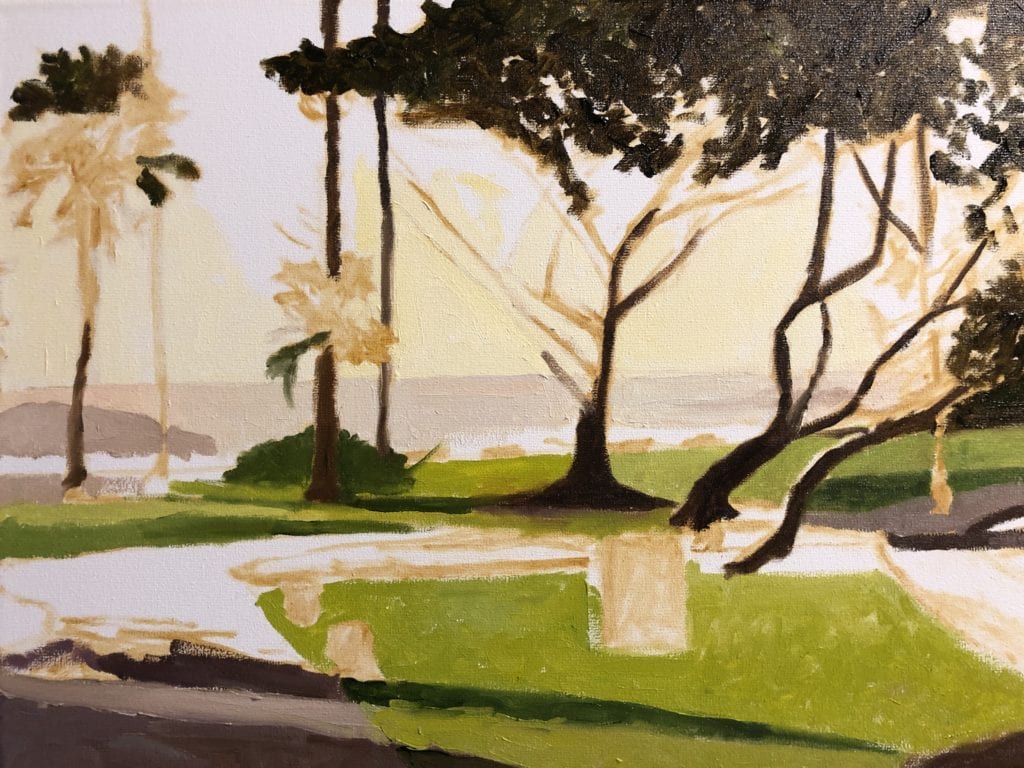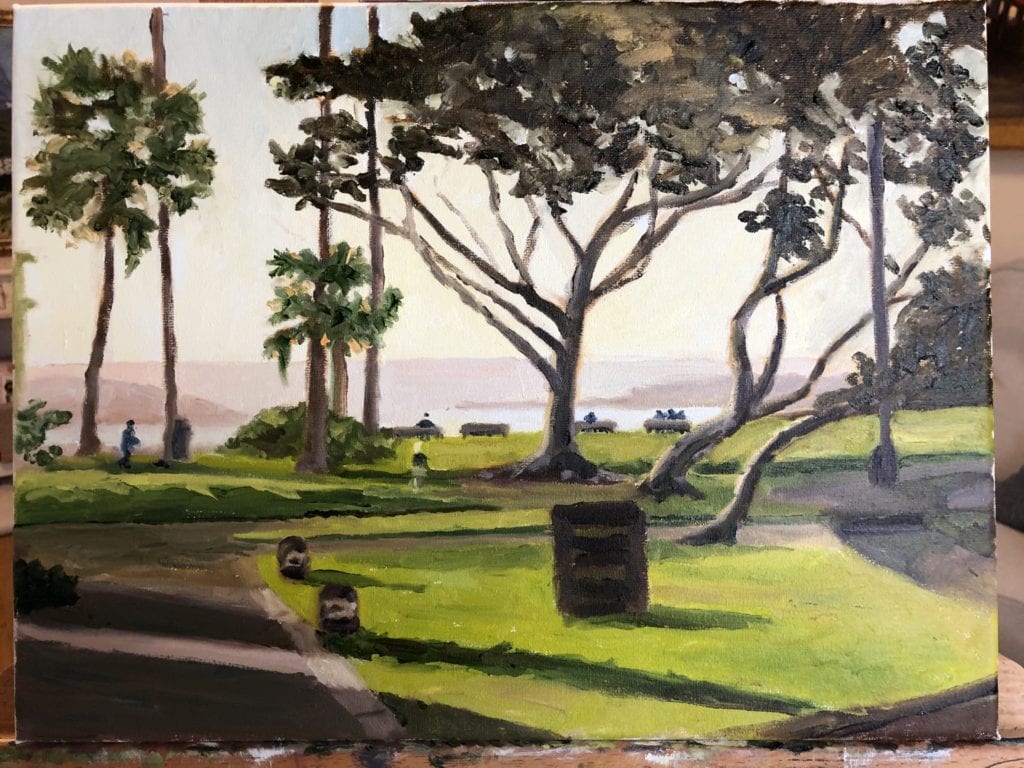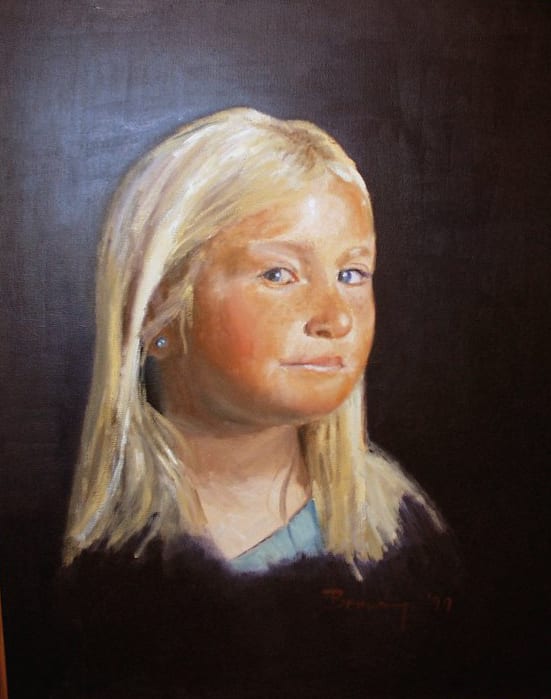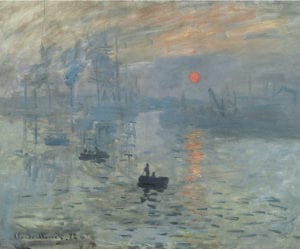Reading many blogs, posts, and comments from developing artists, a common theme I have found is a desire to be more “painterly”; to be looser, more natural, etc. The general advice given is to become confident in the required technical skills that will let you paint with more creative freedom, not needing to focus so much on technique. This is very sound advice, but what to do?

Nobody sits down at a piano without much training and expects to play a Chopin Mazurka. And yet this is a bit the expectation of beginning artists. The resulting disappointment is often expressed as, “I guess I don’t have talent.” Learning to play the piano, I trained daily with “Hanon, The Virtuoso Pianist” to develop finger muscle and movement patterns. It was required by all my piano teachers. I would like to share a couple of tips for emerging artists that wish to become more “painterly”. I hope my experiences can help them as much as they have helped me.
First, put aside the masterpiece and do some exercises. A teacher I studied with had me paint three bricks in each of the primary colors. Once they were dry, I assembled them stacked and leaning against one another in different light as a still life subject. I was told to paint what I observed in maximum 10 minutes on a piece of canvas paper. Rip it off and repeat with the bricks in a different position and light. Pay attention to shadows, reflective colors, etc. but only allow 10 minutes per effort. Rip it off and start again. If I have had an unwelcome absence from painting, I start with a couple of brick exercises the same as my first stop is Hanon after a lull at the piano.
Second, limit your palette to your “go to” colors. It’s a bit like packing for a trip with only carry-on luggage. You need to pack by what clothes you will actually wear, not pack to have a broad selection of clothes you would like to be able to choose from on the trip. The more often you use a particular color, the more familiar and comfortable you become with its mixing effects, adding white, or adding a complementary color. Having all the colors you might want to use, keeps you from developing that comfortable “go to” familiarity with your core palette. It is amazing what variety can be achieved through color mixing. You can always add “visiting” colors like Rose Madder for a portrait, or Sap Green for a landscape. The important thing is to have deep familiarity with your core palette, so you are not experimenting when you mix and have a color in mind.

Third, do a simple underpainting before getting creative with colors. I use a burnt sienna or similar color that is dark when thick and light when thinned with turpentine. I have a rag handy to wipe off parts easily that don’t look right when I stand back and take it in from a distance. It is amazing how liberating it is to have a basic underpainting capturing the main composition elements before starting to throw some paint at it! Continue with adding colors to the painting while trying to paint it from the distance you would view it from. Of course, our arms don’t reach 10 feet, but go for it, constantly standing back to observe. Resist ending up with your face 12 inches from the painting working on details without the perspective from the viewer’s spot.

7AM Main Beach Grisaille 
7AM Main Beach Colors 
“7Am Main Beach” by David Browning
Lastly, focus on capturing light and creating contrasts in the painting. This does not require detailed work but has a wonderful impact from the viewing distance. Here, it is helpful to be more aggressive than you would normally be with your colors. For example, 25 years ago, I was studying portrait painting with Danni Dawson who did Sandra Day O’Connor’s official portrait as a Supreme Court judge. I was painting my youngest daughter from a photo in the class. Being naturally timid and shooting for accuracy in detail, I was gravitating towards the comfortable middle ground in my color mixing. It was resulting in an accurate, but rather flat and dull appearance. Danni walked by and took a brush, mixed some red, yellow, and white on my pallet and put a brilliant splotch of paint right in the middle of my daughter’s cheek. “Now, work that in”, Danni said and walked on. I was shocked since I was in those final moments of getting the details right. I had no choice but to blend in the color splotch she had added. It totally brought the portrait to life and I added similar touches in other areas.

“Breakfast Table” by David Browning 
“Steph” by David Browning

So just to summarize my tips for becoming more “painterly”:
- Do some simple color mixing and composition exercises. Yes, Hannon is more boring than playing a Sonata, but it helps get you there. Paint. Rip. Repeat. 10 minutes max.
- Build your palette from your familiar “go to” colors that you are deeply familiar with how they mix and appear. Expand your palette judiciously.
- Do a simple underpainting to start and paint as much from the distance of the viewer as possible (at least observe from the distance before painting the next step).
- Capture light and create contrasts in the painting that have an impact from the viewing distance.

When you feel you are not being “painterly” and crawling into the details or gravitating towards the dull middle ground, stand back and pick a spot to put your own splotch. You can always work it in, but at least it stakes out a more creative extreme from the viewing distance. Imagine the thrill Monet had when he added the orange sun and reflection to his “Impression Sunrise”!
Happy painting and tell me how these tips work for you and what ideas you have to be more “painterly”.